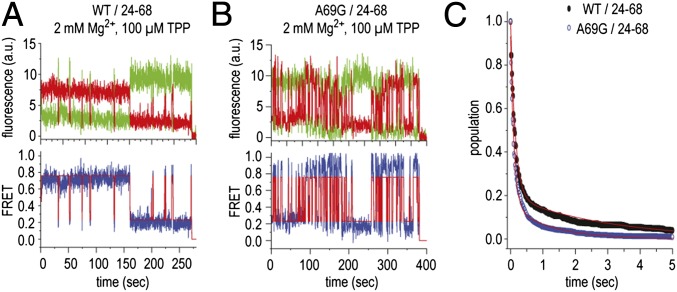Fig. 4.
Comparison of typical smFRET traces for A69G and WT TPP aptamer at low time resolution (150 ms). (A) Fluorescence (green, Cy3; red, Cy5) and FRET (blue) trajectories of an individual WT TPP aptamer molecule, where idealization of the data to a three-state Markov chain is shown in red, observed in the presence of 2 mM Mg2+ ions and 100 μM TPP. (B) Same as A but for the A69G construct. (C) Survival plots showing the bimodal nature of the high-FRET state. Lifetimes for wild-type and A69G constructs were estimated by fitting each distribution to a double exponential decay function and determining the population weighted average of short- (∼100 ms) and long-lived (approximate number of seconds) high-FRET states (WT ∼700 ms; A69G ∼275 ms). For both constructs, the long-lived high-FRET state constituted ∼20% of the dwells observed. The lifetimes of both short- and long-lived dwells were similarly reduced in the A69G context.

